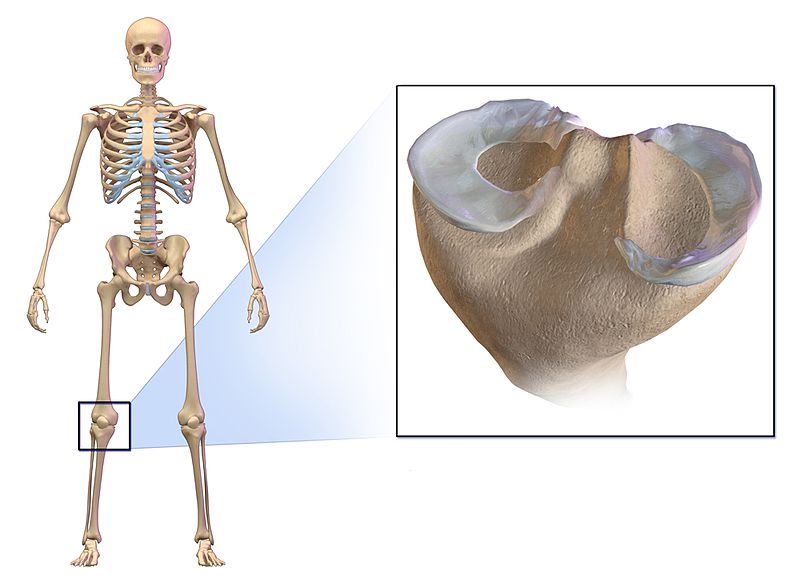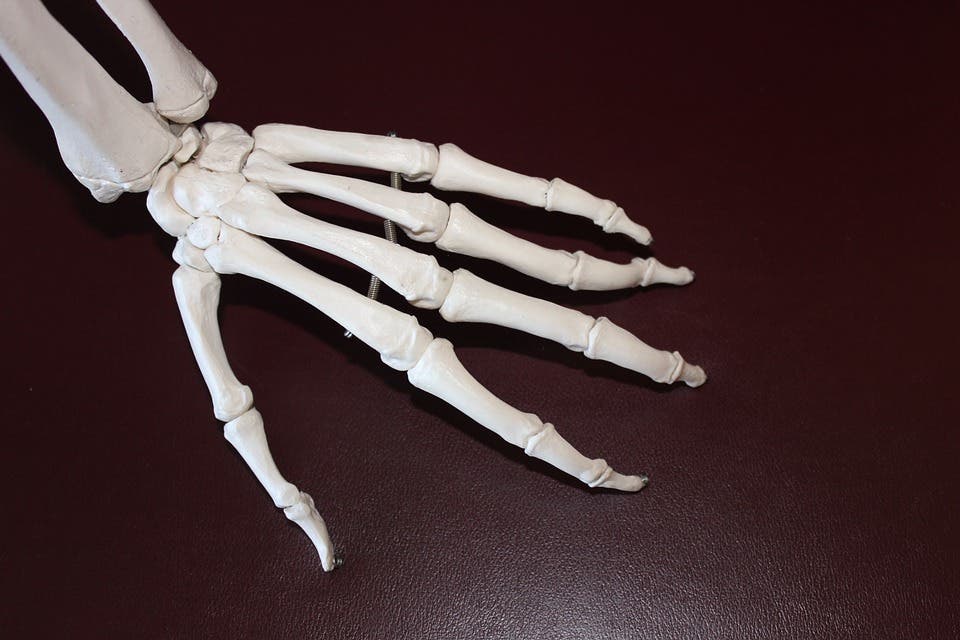Having and maintaining an active lifestyle is one of the joys of life. It’s both a necessary part of our physical health and a great stress reliever to help with the darker, gloomier days.
When we work out and get those reps in, there is always a risk of some kind of mechanical mishap with our bodies. Maybe we stepped in wrong. Maybe someone fouled us on a field. Maybe our decades of bad posture and sitting had led us to an incorrect pattern of movement that cascaded to an injury.
Whatever the case, the risk we take on is always just a bit less than the benefit we extract from being active. In the event that we do get injured, there has to be a time period for calmness, recovery, and a full regaining of health so that we can get back to the field once again.
Among the most common injuries in sports and life, in general, is a torn meniscus. That injury is no joke. There is a whole spectrum with varying degrees of severity when it comes to a torn meniscus. Here, we will explore everything we need to know as well as how to implement a treatment plan, i.e. which knee brace for meniscus tear injuries. The braces themselves have varying tiers of use, as you’ll come to find.
Here are the 5 things you should consider while making a full recovery:
What and where is the meniscus?
The first thing we have to address is what the meniscus actually is in relation to the entire leg complex. In order to do so, we’ll have to go over some basic anatomy.
The knee is classified as a “hinge-type synovial joint.” This means exactly what it sounds like. It’s a hinge that primarily moves in a given range of motion that allows for flexion and extension.
There’s a reason why the leg doesn’t bend other ways. It’s locked into a range of motion similar to a door. It can move to the point (flexion) where the calf muscles hit the hamstring—like an open door and move back to the straight position (extension) you observe while standing, like a door closing.
The “synovial” part means that the cartilage parts glide on a lubricated surface allowing for smooth motion throughout. So in essence, it’s a very well-oiled mechanical lever that allows your body to move through space seamlessly. The main parts of the knee are:
- The tibia and the articulating surface of the tibia, are covered in cartilage.
- The femur and the articulating surface of the femur, are covered in cartilage.
- The patella serves as your kneecap.
- The ligaments hold the structure together in a multi-directional criss-cross fashion.

So where is the meniscus? The meniscus is in between the tibial and femoral articulating surfaces and serves as shock absorber. This is why when you run properly, you normally don’t feel the jolt or bone crashing into the bone. You’ve got two menisci (plural form of meniscus) per knee joint:
- One of the outer portions called the lateral meniscus
- One of the inner portions is called the medial meniscus.
Every time you move the leg, the meniscus is in action. When you play any sort of sport or perform any kind of multi-directional movement, the meniscus acts to soften the blow to the knees and re-orient you and your body position in order to maintain balance.
This function is also known as proprioception and is mediated by little units of the nervous system that work independently from conscious thought. The menisci also serve as an attachment to a bunch of different ligaments. The entire complex is meant to work as a single, consistently firing unit. When something goes wrong down there and you can feel it upon impact or stepping down onto a surface, more often than not, it has to do with the menisci in one way or another.
How do I know I have a meniscus tear?
A meniscus injury can manifest itself in a whole bunch of ways. It’s a pretty sturdy structure, similar to a cushion on either side of the knee joint at the tibial end, so injuring it takes some strong movement or some odd angles. Any time you rotate your knee rapidly or forcefully twist your leg at the knee, you run the risk of tearing your meniscus. The question is, how would one know if they have a meniscus injury? Here are a few telltale signs.
Popping
Knee popping is also described as clicking or snapping. It’s usually experienced by people who use their legs a lot like athletes and lifters. You can hear a popping noise when you either flex or extend the knee. That’s the basic sign. Now, this might not always mean you have a torn meniscus, but the gradual increase in sound, intensity and even pain can provide a key insight into a possible tear. Another reason for knee popping and pain might not be a torn meniscus at all, but crepitus (cartilage irritation) caused by arthritis.
Swelling
Swelling is a common catch-all inflammation indicator. It means something down there isn’t going as well as it is supposed to. If you’re experiencing swelling, there will be, more likely than not, some pain involved. The swelling, in turn, will limit your mobility a bit. It may not be super pronounced. It could just feel like it’s a bit bigger than it is supposed to be coupled with some extra heat radiating from the center of your knee. This is usually the point at which people become more concerned.
Decreased Mobility
This is pertaining to any sort of movement you might normally be able to carry out. This means straightening your knee fully. This may also mean the inability to twist or rotate your knee due to either pain or stiffness. These are all classified under the umbrella of decreased mobility.
If you’re experiencing one or more of these, you should see a doctor as soon as you can. Knee injuries, especially meniscus tears can progress and become worse. These are best treated when you get to a doctor early on. The treatment plan will be much more effective and you’ll recover much faster. Of course, the doctor is going to rule out things like arthritis. If this happens, you might have a completely different set of treatments. Remember, the knee is a fairly complex mechanical joint.
How bad can it be?
A meniscus tear can be either lateral or medial. That is, it’s the meniscus towards the midline of your body or the one on the outer side. In order to determine which side it is on, and what degree of injury you have, the recommended diagnostic tool is an MRI. An MRI is a non-invasive procedure that can visualize various structures that are inside your body. Once you get that done, a doctor can determine what the grade for your meniscus tear is. Here are the various degrees of damage and what they mean to you:
- A grade 0 on the MRI you don’t have a tear at all. If you’re experiencing similar pain, it may be attributed to a different disorder or movement pathology. Either way, it isn’t your meniscus.
- A grade 1 is a minor tear that manifests itself in slight pain and some swelling. It’s often reported as just a minor nagging pain in the knee during flexion. You’ll most likely be told to ice it and let it rest.
- A grade 2 is a significant tear that may not need surgery. There’s definitely pain involved. But people with a grade 2 tear can often walk around and still get to point B if they need to.
- A grade 3 tear is where things start to get squirrely. A grade 3 tear is a prime candidate for any surgery. Arthroscopic surgery is the most common approach here. A grade 3 tear is also known as a “true” tear. It means there’s definitely a partial or full detachment of the meniscus from either the bone or separation in the cartilage center.
The different types of a torn meniscus
The type of tear is also important when a professional is determining the course of action. There are 6 common ones:
- Your intrasubstance/incomplete tear is often a sign of early degeneration. It’s considered a “stable” injury in that you can most likely heal up without having invasive surgery. They’re seen in the middle of the cartilaginous mass on either the lateral or medial side.
- You’ve got your radial tear—the most common of the tears. It’s a tear right up the middle of the crescent-shaped meniscus structure in the part where there aren’t any blood vessels around. That last part is important because it’s easier for an anatomical structure to heal if there’s a vascular supply. Doctors typically go in with the arthroscope and delicately remove the damaged part.
- The Horizontal tear is the biggest candidate for meniscal repair. It’s a tear along the line of fibers that make up the meniscus. When doctors see this, they typically try and sew it back together. Out of all the injuries that need invasive intervention, this is probably the most agreeable in terms of patient comfort and outcome.
- If you’ve got a flap tear, you’re looking at a fairly uncommon and unusual pattern of the tear. It’s where a piece of the top portion of the meniscus is partially torn like a soda tab. Surgeons usually just remove that piece without any sort of damage.
- A complex tear means it’s a tear that changes direction in the meniscus. It’s treated like two tears in one. In these cases, your doctor’s next move can be anything. It really depends on the severity, the direction, and the nature of the tear. They can remove the whole thing or just repair it like a horizontal tear. Either could be on the table.
- The strangest one by far is the bucket tear. It’s when there’s a tear near the center of the meniscal mass and it’s pulled out in the other direction, creating a bucket handle look. This one is a cause for mediating medical attention and should be repaired and treated as soon as possible.
Knee braces and recovery for a torn meniscus
Recovery from meniscal injuries requires following some very basic principles. You need to give it some rest, alternate between cold and hot, and be patient.
If you’re an athlete, it may be tempting to go back in right away, but know that resting and letting the meniscus fully heal is an investment in your future ability to play. Doctors usually recommend wearing a brace for such injuries.
These come in a variety of shapes, but what you want is a hinged brace that limits extension and movement. Your knee needs to heal, above all else. It’s not necessary to keep the patella in place, so a cover may or may not be used. But as long as it’s slightly tighter than you think it should be, and a bit more rigid than you might want it. It’s less about the overall comfort and more about giving it uncompromising stability while it’s in the healing overs.
Remember, cartilage and joints receive nutrients indirectly. Unlike major organs where there are vast networks of blood vessels constantly exchanging nutrients to the target cells, cartilage receives its nutrients through a barrier layer. It then diffuses slowly into the rest of the particle mass. Because of this, healing is often slow. If the doctor says you need 8 weeks of lessened mobility and a lot of rest, throw on that brace and order one book. You’re going to be doing a lot of sitting.
Meniscus tears are not fun, but they happen. Sometimes, they come at the most inopportune time, like in the middle of an important game. Don’t worry too much about it. It’s not a life-threatening or career-ending injury. It can get worse and it can cause some problems down the line. But if you get it treated immediately and find your preferred knee brace and recovery therapy, you’ll be up and about in no time.
Knee Replacement Surgery For Torn Meniscus
If you’re experiencing pain in the knee and difficulty straightening your knee fully, particularly the area around the knee cap and your knee’s outside edge, you may consider knee replacement surgery. The good news is that there are several options available to help alleviate or prevent further damage to your knee, helping you return to active daily living in as little as six weeks.
One type of surgery involves repairing the tears in the cartilage between the knee’s outer surface and bone. While the damage is not as severe as it is with a torn meniscus, there are still significant benefits to repairing the cartilage between your knee and bone. This can provide better protection against future tears and also help minimize the amount of time it takes for arthritis to take hold.
Surgery may also help eliminate swelling in your knee. Because the cartilage of the knee is damaged, the bones cannot properly cushion the joint. The result is often swelling and pain in the area of the knee. While this can occur on its own, it’s a common part of aging and occurs more in older people.
While a torn meniscus is usually associated with the development of arthritis, it’s possible that your condition is caused by another problem, such as a dislocated kneecap or a bone spur that’s not healed. In this case, the surgery will treat the cause of the damage and allow for the repair of the knee. The pain and swelling will disappear, along with any swelling or stiffness you experience.
If you decide that knee replacement is the best option, you should make sure to get the surgery done only by a professional who has extensive experience performing the procedure. Also, take note that knee replacement surgery recommended for torn meniscus may be dependent upon the cause and severity of your injury and your current health.







